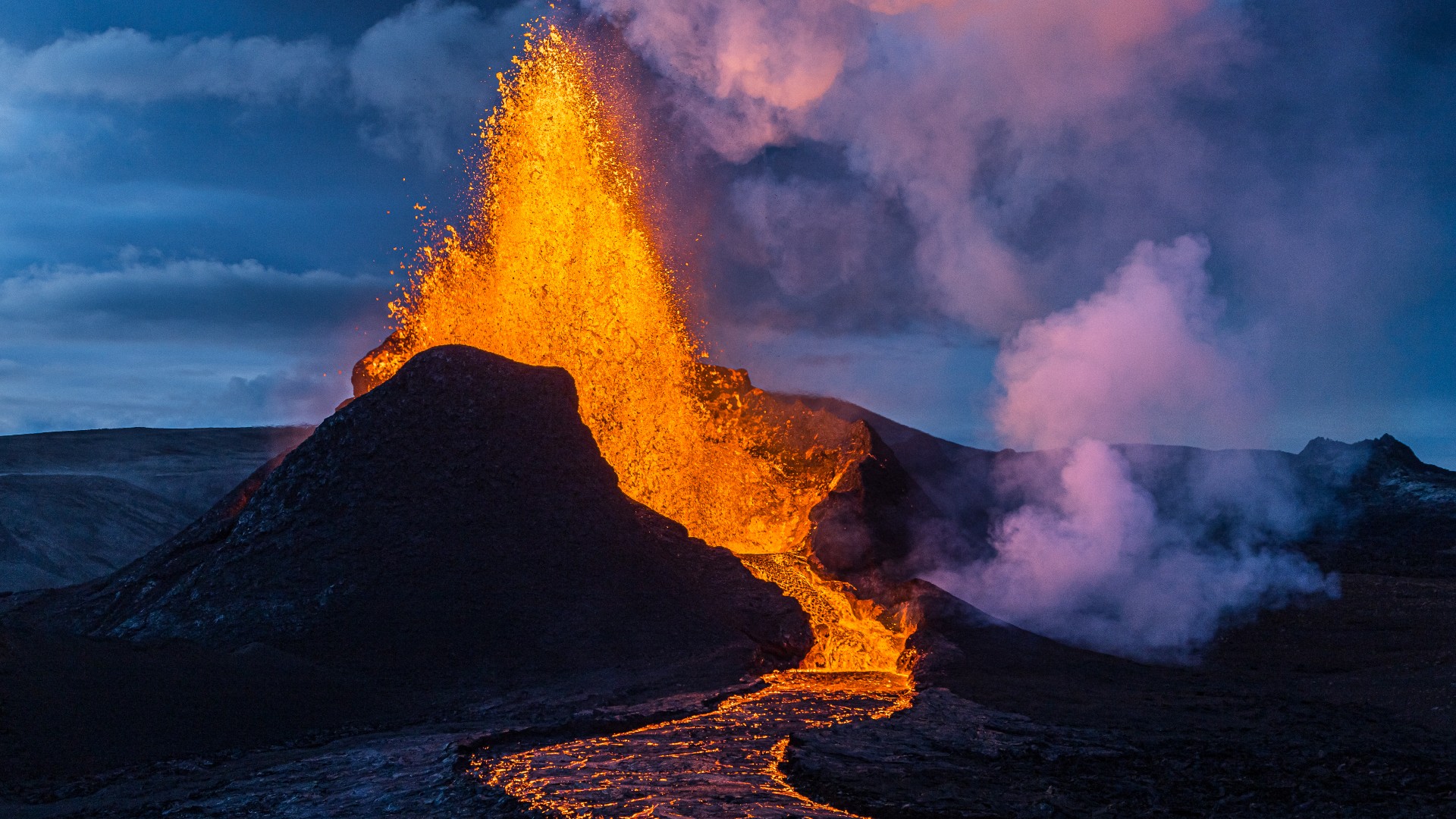Volcanoes
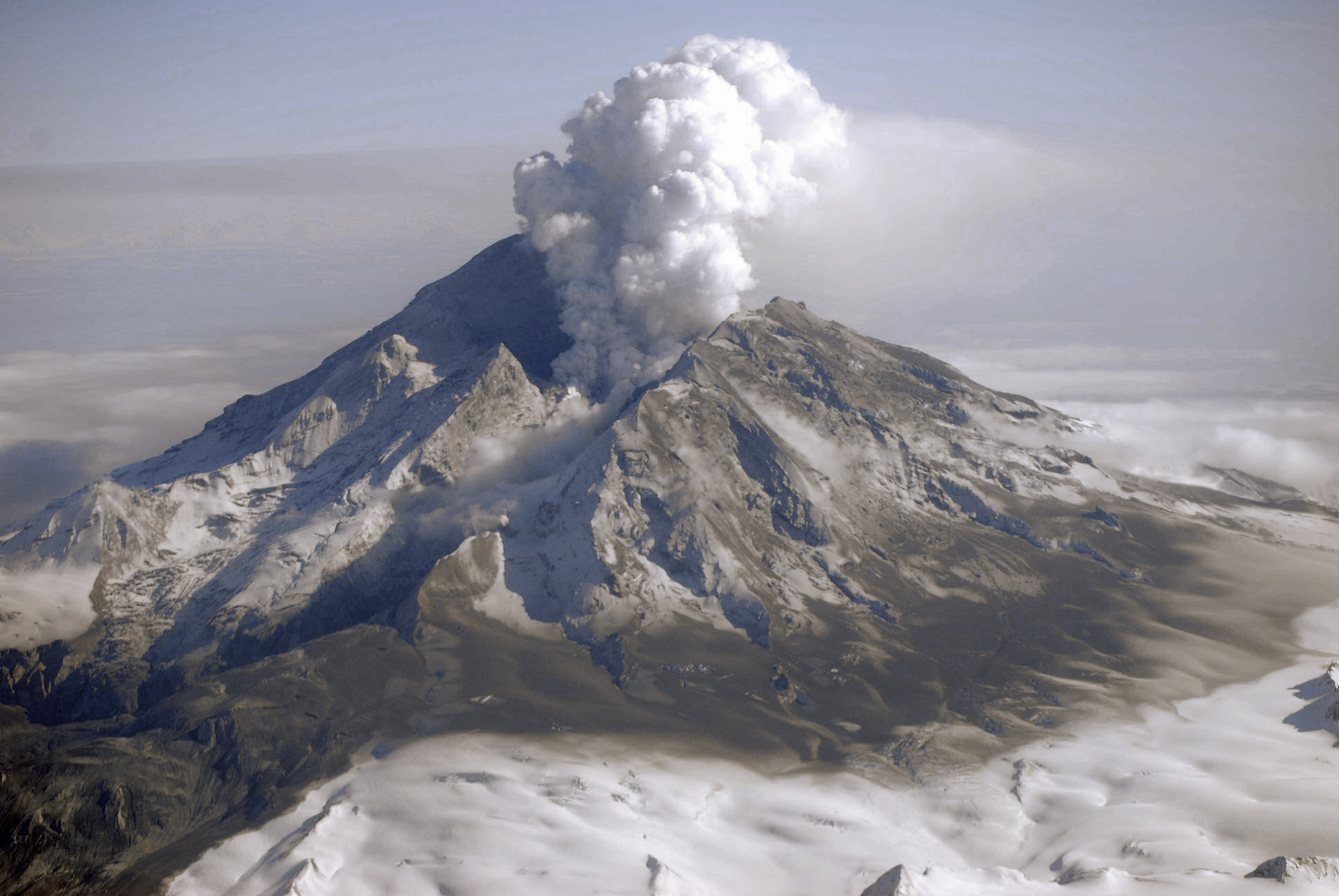
The U.S. Geological Survey defines a volcano as a vent in Earth's surface, either on land or on the seafloor, from which molten rock called magma, as well as ash and gases, can erupt or ooze. Different types of volcanoes erupt in different ways, with some erupting spectacularly and others, most notably Hawaii's shield volcanoes, steadily oozing lava. There are different types of volcanoes, including stratovolcanoes, shield volcanoes and cinder cones, and different types of lava and other volcanic flows. Volcanoes can be active, dormant or extinct. Most of Earth's volcanoes are located along the Pacific Ring of Fire, where many of Earth's tectonic plates subduct beneath another plate. Currently volcanic eruptions cannot be predicted, though most of the big, active volcanoes are routinely monitored and authorizes warn when they think an eruption is likely. Read below for the latest news on volcano monitoring and research, current volcanic eruptions and to see amazing pictures of volcanoes.
Latest about Volcanos

Pair of 'glowing' lava lakes spotted on Africa's most active volcanoes as they erupt simultaneously
By Harry Baker published
Earth from space This false-color satellite photo from 2014 shows the immense heat emanating from lava lakes at the summits of a pair of simultaneously erupting volcanoes in Congo.

'It was amazing': Scientists discover ash from 2 mystery volcanic eruptions in Wyoming
By Sascha Pare published
Scientists have found previously undocumented ash deposits buried beneath the Lava Creek Tuff in Wyoming — and at least one of them could be from an unknown volcanic eruption, they say.
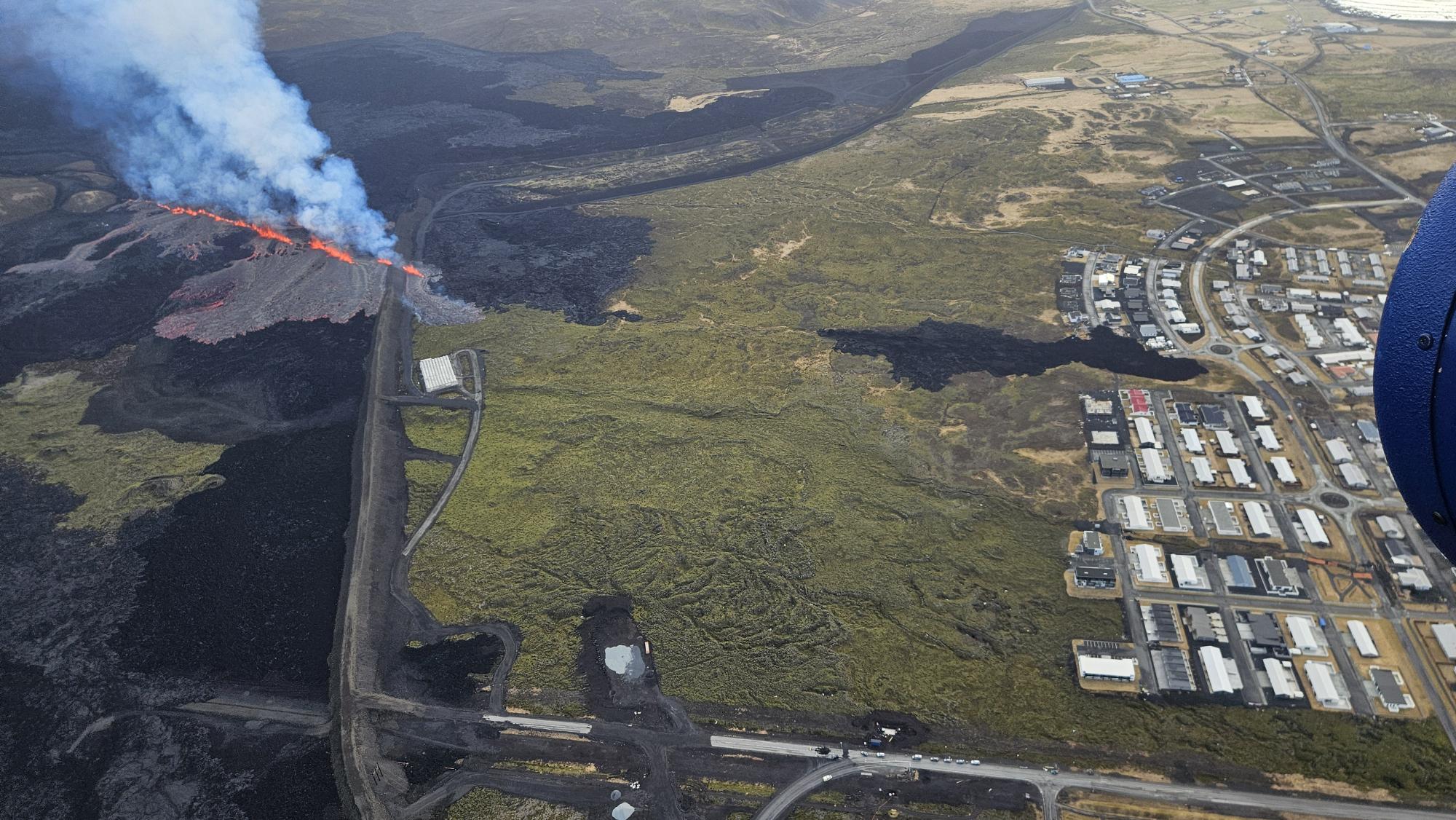
Lava bursts through Grindavík's defense barriers as new volcanic eruption begins on Iceland's Reykjanes Peninsula
By Pandora Dewan published
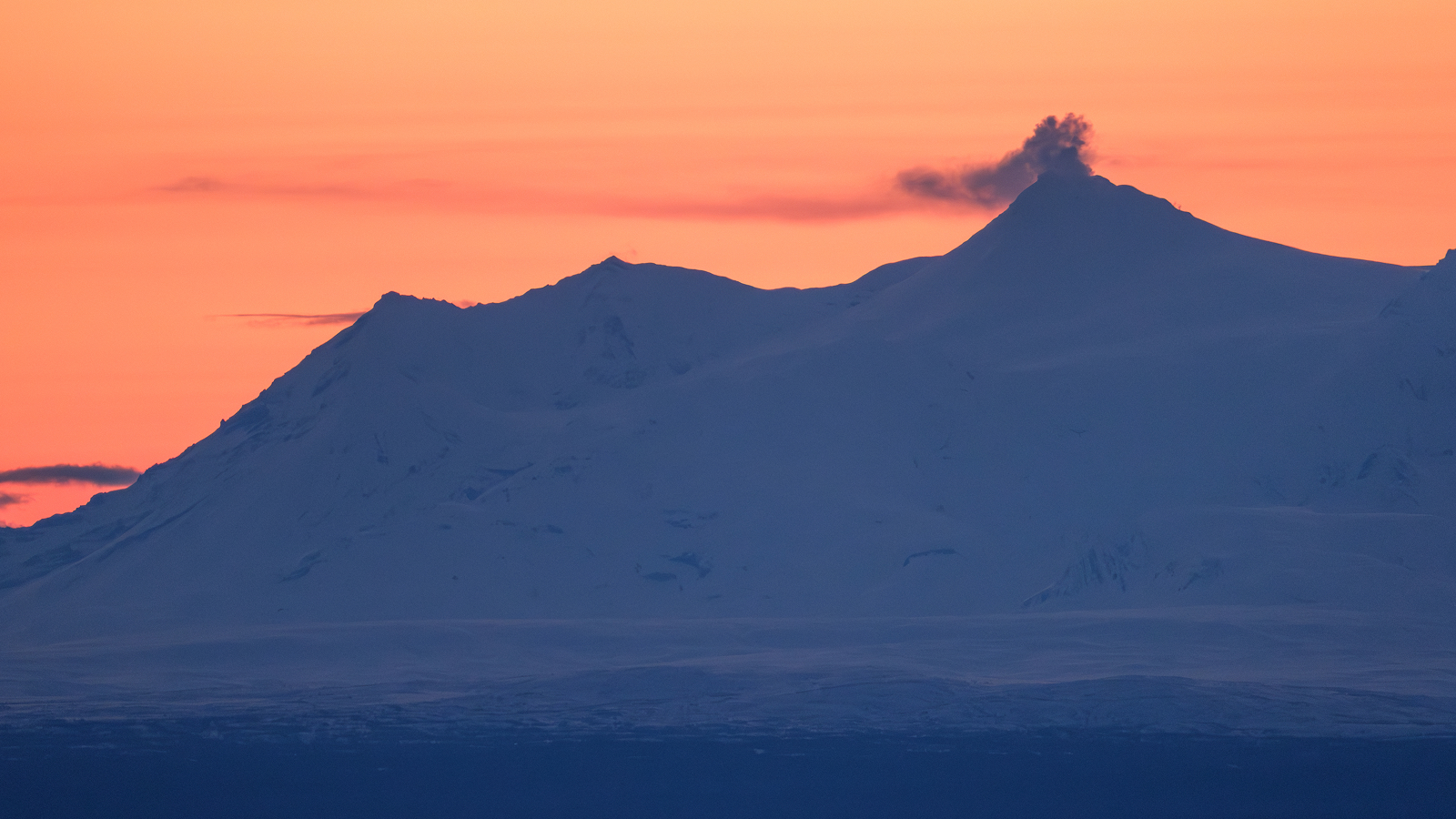
Huge steam plume rises from Alaska's Mount Spurr as volcano edges closer to eruption
By Jess Thomson published
The Alaskan Volcano Observatory has shared new images of plumes of gas streaming out of Mount Spurr, which scientists suspect will erupt in the coming weeks or months.
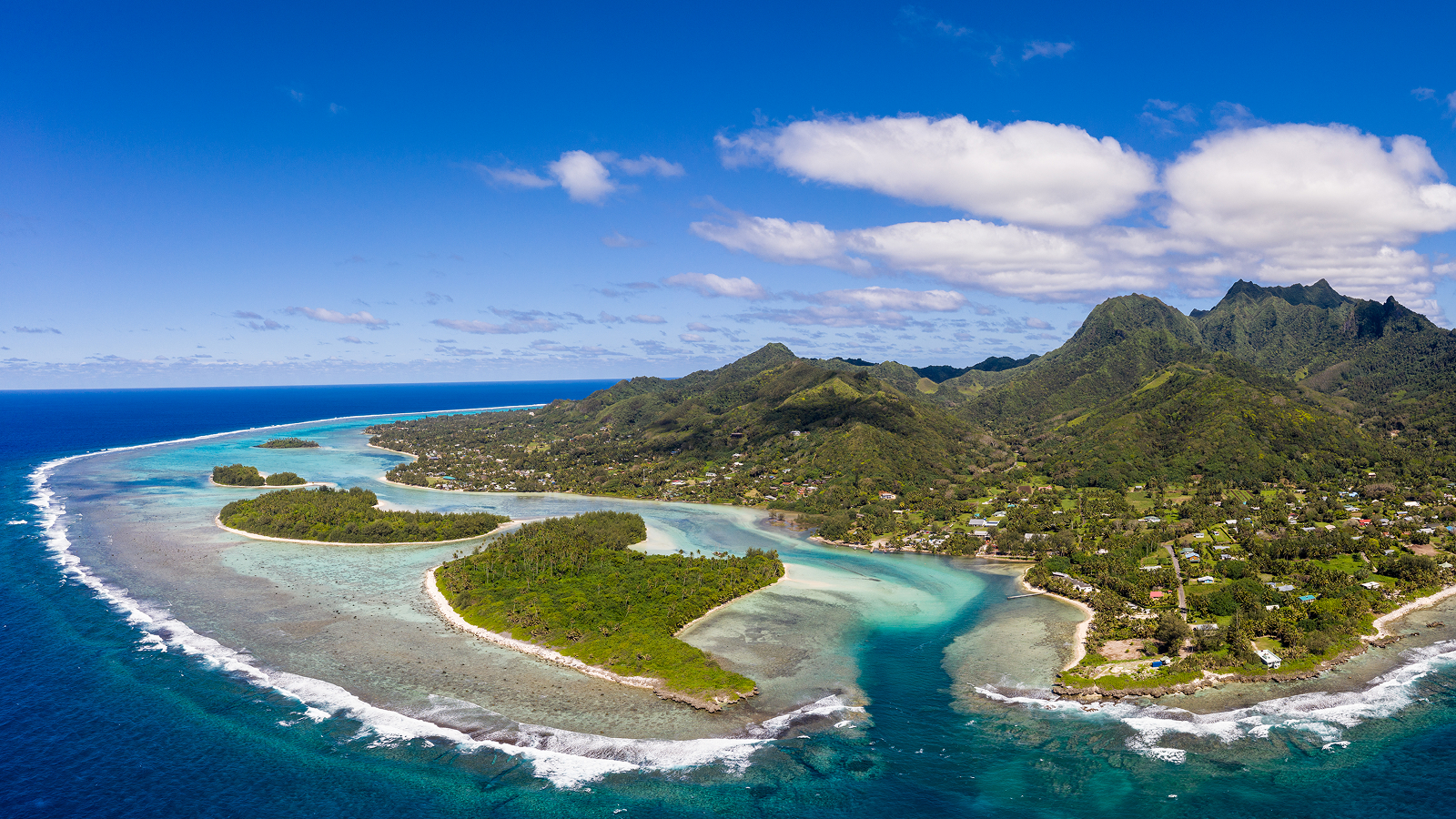
Never-before-seen chain of volcanoes discovered hiding near the Cook Islands
By Jess Thomson published
After suspecting the presence of a series of underwater volcanoes near the Cook Islands, researchers have now mapped out the newly discovered structures.
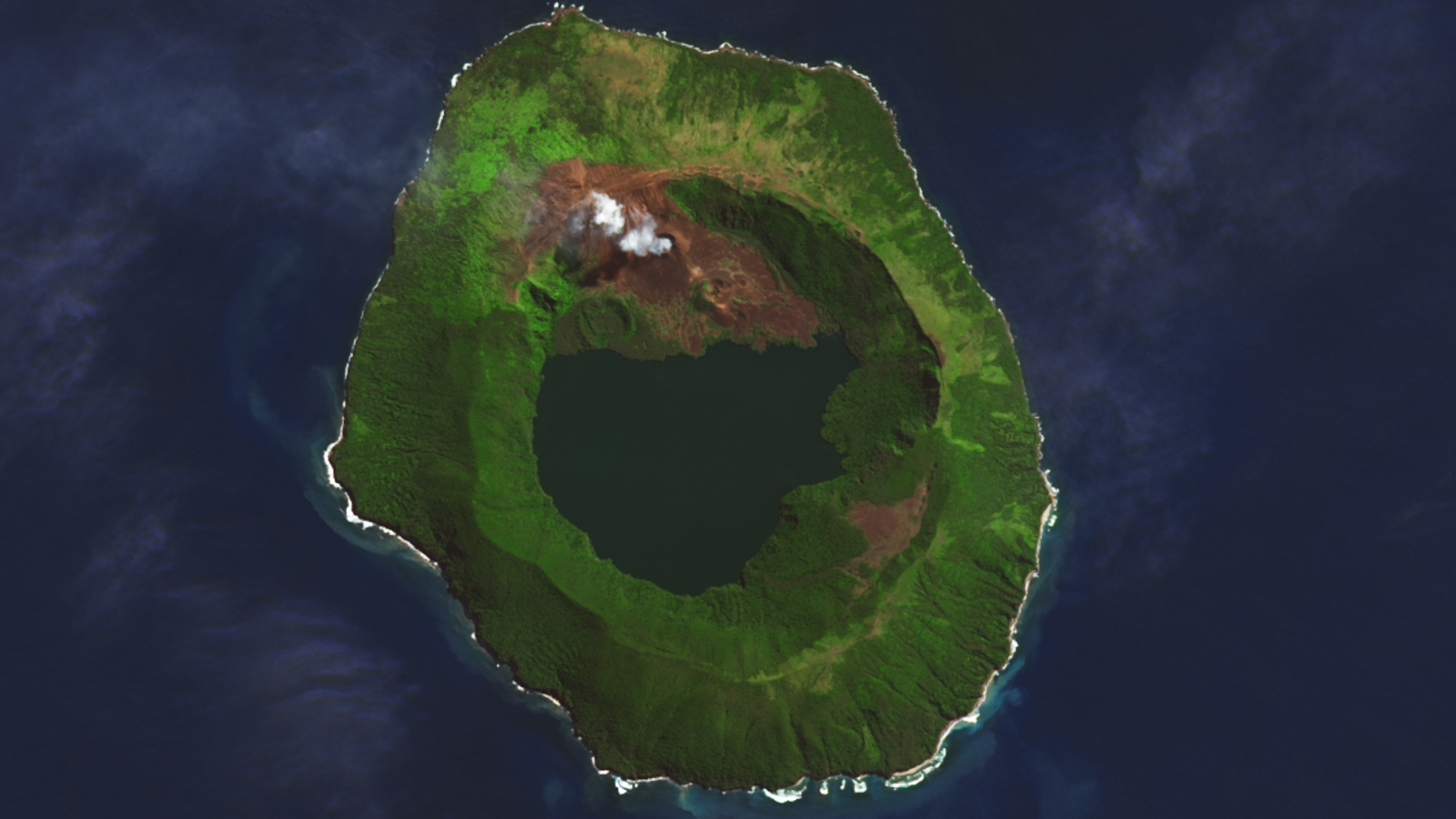
'Shining anus' volcano in Tonga coughs up cloud of smoke during recent eruption
By Harry Baker published
Earth from space A 2022 satellite photo shows smoke rising from a caldera on Tofua, highlighting the "looming threat" of the volcanic island.
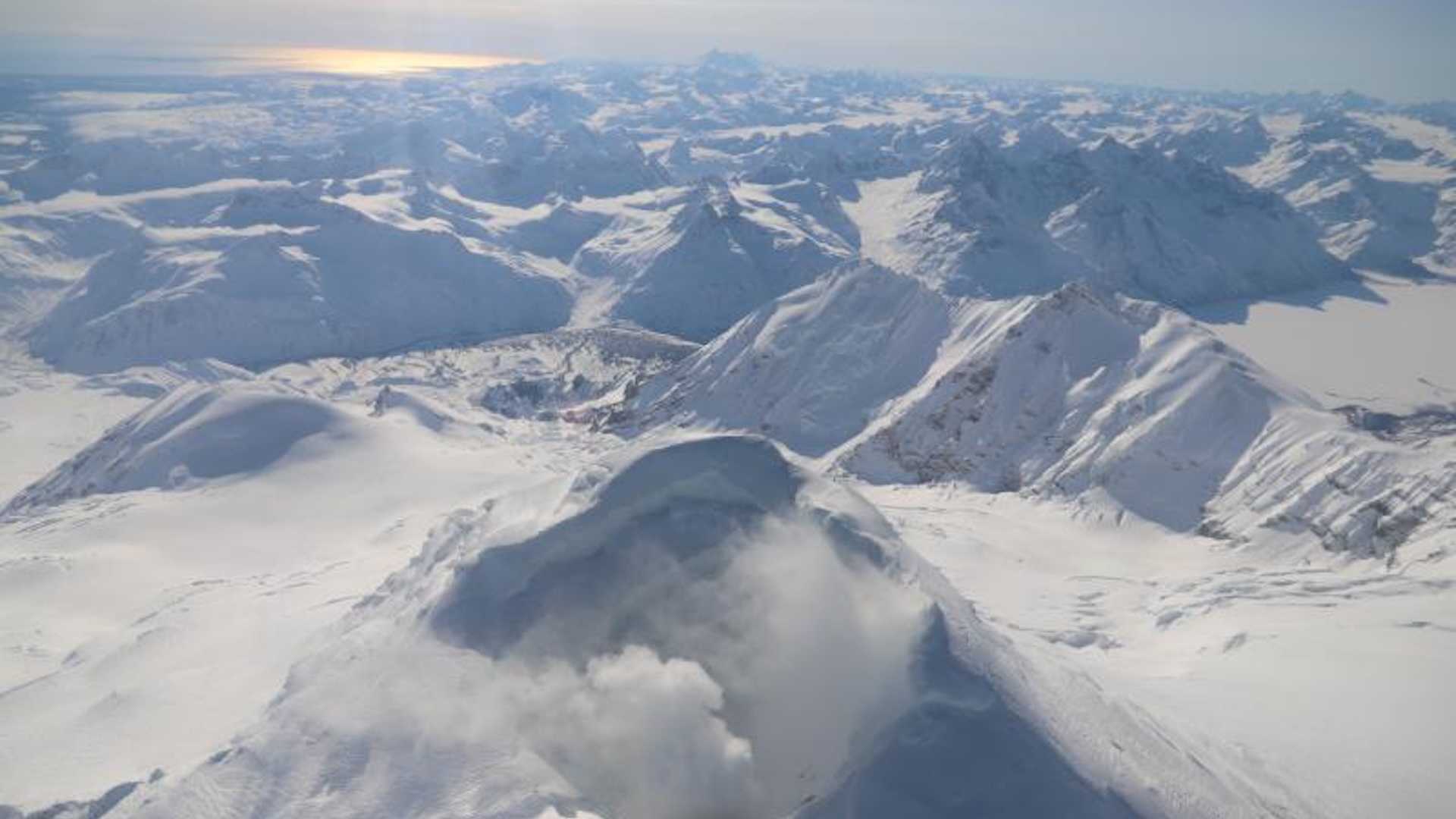
Alaskan volcano Mount Spurr showing activity that will 'most likely end in an explosive eruption,' scientist says
By Stephanie Pappas published
Mount Spurr near Anchorage has been showing signs of unrest for a year. Now scientists think it's creeping closer to an eruption.
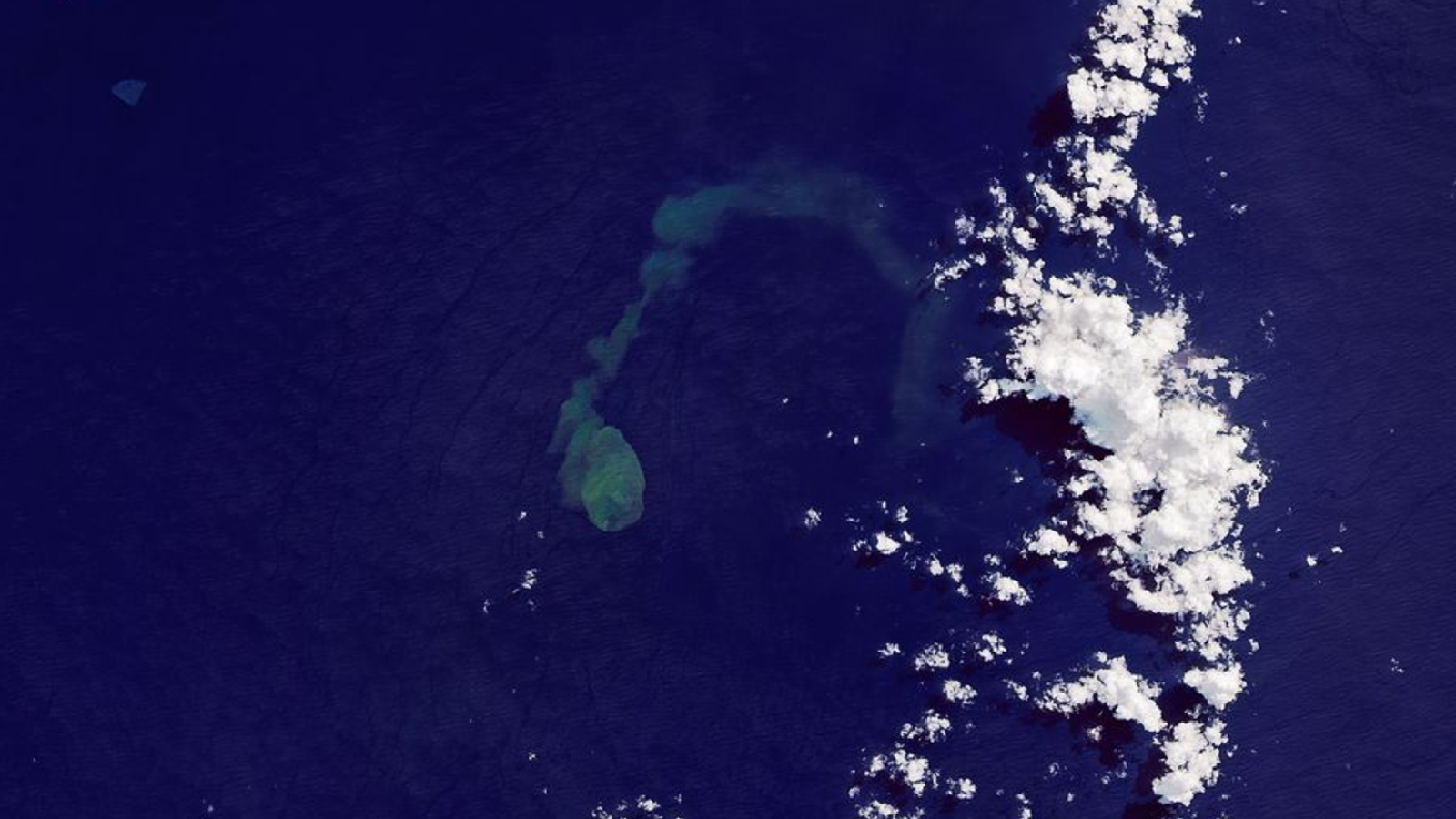
Erupting 'sharkcano' spits out a giant underwater plume in Oceania
By Harry Baker published
Earth from space A 2022 satellite photo shows a large plume of discolored water rising from the undersea Kavachi volcano, during an eruption that likely scattered the sharks that normally dwell there.
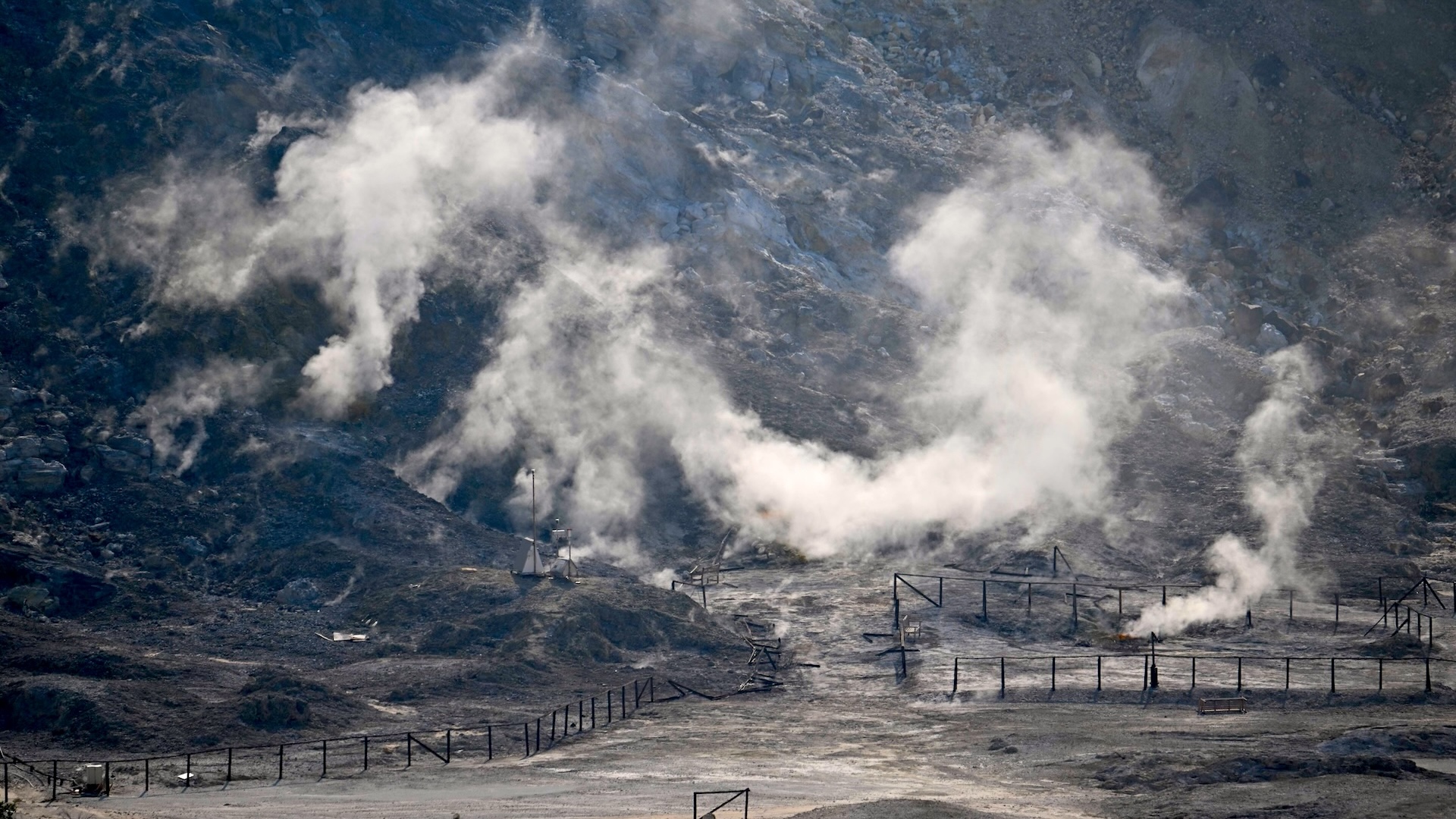
Italy's Campi Flegrei volcano may unleash devastating eruptions more often than we thought, ancient outburst suggests
By Stephanie Pappas published
A new look at an ancient eruption at Campi Flegrei raises new questions about the propensity of the still-active volcano, located near Naples, to produce major eruptions in the future.
Sign up for the Live Science daily newsletter now
Get the world’s most fascinating discoveries delivered straight to your inbox.
